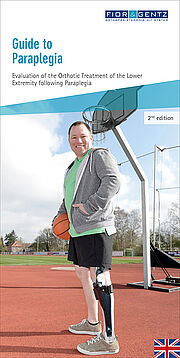User Story of Julian Lichte
wears two orthoses with NEURO TRONIC system knee joints and NEURO SWING system ankle joints (status as of 2020)
About Julian
- born in 1984
- sports ace
- first orthosis approx. three months after accident

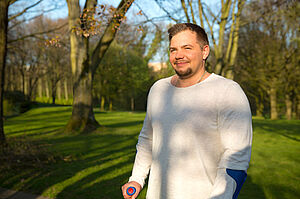
120kg – That’s eleven beverage boxes, three bags of potting compost, the weight of a miniature Shetland pony or the number of kilos Julian Lichte can bench press. You can imagine a powerfully built man standing in front of you. The fact alone that he ist standing is a miracle of its own.
Julian Lichte is a so-called paraplegic. Both of his legs are paralysed while his upper body and arms are fully operative. Julian’s experience and stories could be the source of a screenplay.
After a serious accident in 2000, Julian ends up in intensive care. His mother is by his side when he wakes up. From the look on her face, Julian recognises that something is wrong. Later on, he is told that he has a comminuted fracture between the last thoracic vertebra (TH12) and the first lumbar vertebra (L1). Both legs are paralysed. The physician explains to him that he will very likely no longer be able to walk and will need a wheelchair. Julian undergoes a surgery where a piece of the iIliac crest is removed to stabilise the damaged region of the spine. This is followed by further surgeries.
Julian states that this period was a complete disaster for him – emotionally, psychologically and physically. His friends and family are always there for him and support him in any way possible. Nevertheless, dealing with such an accident is not easy. Looking back, Julian says that during this time he developed a strong sensibility for interpersonal relationships. He perceives small gestures, facial expressions, posture or the intonation of words much more intense than before. He gets to know many patients with similar fates. Some of them try to persuade him to use a wheelchair. The solidarity among each other is strong.
During physiotherapy, the exercises are focused on the wheelchair. By chance, a therapist enters his room with crutches shortly after he is injured. It happens to be a misunderstanding. However, Julian still remembers this brief moment to this day. He says that moment might have already been pointing the way. Afterwards, crutches or even orthoses are no longer an issue for the time being.
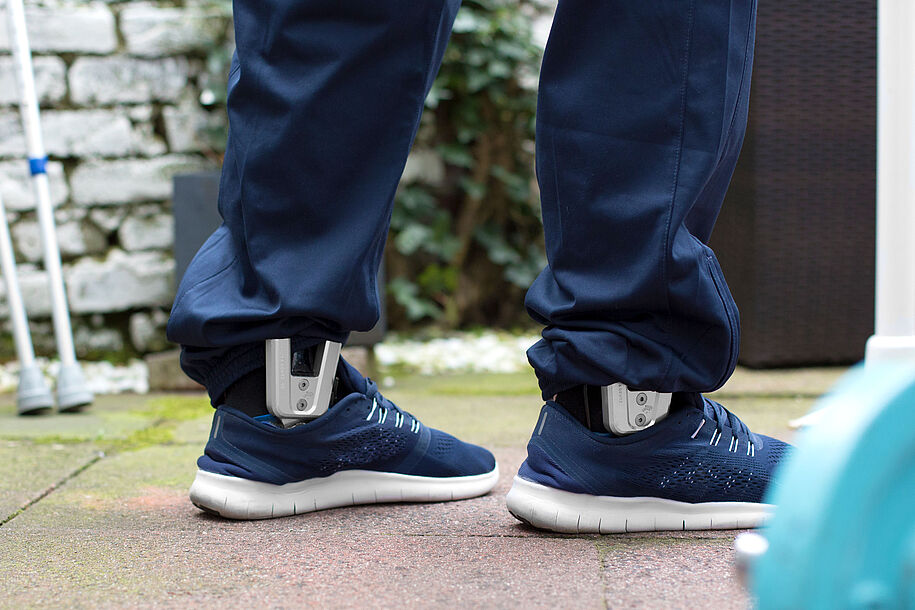
Two and a half months later, he is released from hospital with a wheelchair. His parents’ flat is located on the third floor. There is no elevator. His mother helps him carry himself up and down the stairs every day. Shortly before the accident, the family has grown: Julian has a brother now. Julian says that to him, his mother is a fighter. She takes care of her two sons like a lioness. Along with that, she does some online research to find other ways to help Julian. She comes across orthoses as well as a wheelchair that can be placed in a vertical position. The wheelchair has a delivery period of six months. Julian receives two orthoses. It is solely for his mother’s research and the great effort of his physiotherapist Gabi that Julian encounters orthoses at this point. He describes them as “bulky” and is annoyed by the act of putting them on. Out of spite, he puts them on and takes them off a hundred times. After that, putting on the orthoses is no longer a problem. He uses them for physiotherapy and tries to incorporate them in his everyday life. With a lot of exercise, he is able to stand with the orthoses. This is a first success based on the tireless commitment of the two women in Julian’s environment.
From now on, physiotherapy and sport determine Julian’s everyday life. He wants to make use of everything that is possible. He wants to be able to stand and even walk. However, there are many questions: which possibilities offers physiotherapy? Are there orthoses, which he could walk with? What is the best way to support his body? Where can he find more information about it?
In the physiotherapy centre, he is looked after by Gabi. She is incredibly committed and keeps finding new exercises for Julian. Every tiny success motivates him. Julian himself keeps coming up with new possibilities, as well. He tries everything from electro stimulation and blocks of ice, which are supposed to stimulate his muscles, to an electrical home trainer bike, in which he sleeps at night while still moving his legs. With the help of crutches, he uses his orthoses to practice changing platforms in the underground to lose his fear of falling and of the automatically closing doors. He dreams of being able to walk properly with the orthoses.
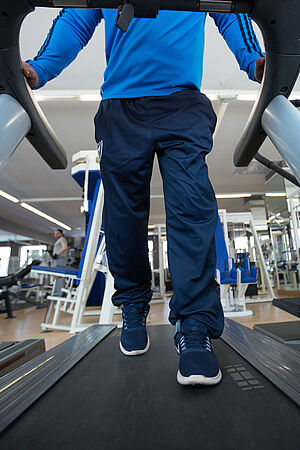
Every interruption due to hospital stays is a training setback for him. In his environment,
he feels well integrated with his orthoses. He uses locked joints. Usually, the orthoses do
not withstand the load Julian exposes them to for very long. He puts a lot of strain on them
and his body and rarely allows himself to take a break. Every movement is exercise for him.
He gets to know many physiotherapists over the years. Some of them are more, some less
dedicated. There is no specialisation for certain patient groups or even exercises with
orthoses. When Julian realises that he is no longer advancing, he develops his own training
concept. He spends all of his free time in the swimming pool, swimming with weights on his
legs. During the self-prescribed lunch break, he practices standing and small steps with
orthoses outside on the railing. Since the knee joints of his orthoses are locked, walking is
not possible to the full extend. He needs to keep the knee joints locked in order to achieve
maximum stability due to his paralysed legs. This is how the months go by.
He has several inflammations in his leg and each time he has to go through surgery. In the case of one abscess, it becomes so bad that he ends up in the intensive care unit and has to be fed artificially. When his physician advises him to have his leg amputated, Julian loses his nerves. He gets loud and tells him that this is not an option for him.
As soon as he returns home, he continues exercising and says goodbye to the wheelchair forever. His next stop is the medical supply store. He receives two new orthoses. This time, they have automatic knee joints, which lock under load and unlock during swing phase. With the help of crutches, he practices what is natural for healthy people: walking. He needs a strong upper body in order to keep his balance. In addition to equipment training, he purchases bars. With the bars, he practices moving his legs and feet to form a step. The strength to do so comes from the hips and the upper body. He places one foot after the other on the floor (toe tap) with a repetition of 1000. This is how his day starts. Four to six hours of exercise per day are Julian’s dogma. He spends an average of one hour on the treadmill in the gym. He practices walking with his hips and legs in a way that enables the automatic knee joint systems of the orthoses to lock and unlock at the right time. On the treadmill, he gets better and better at this exercise.
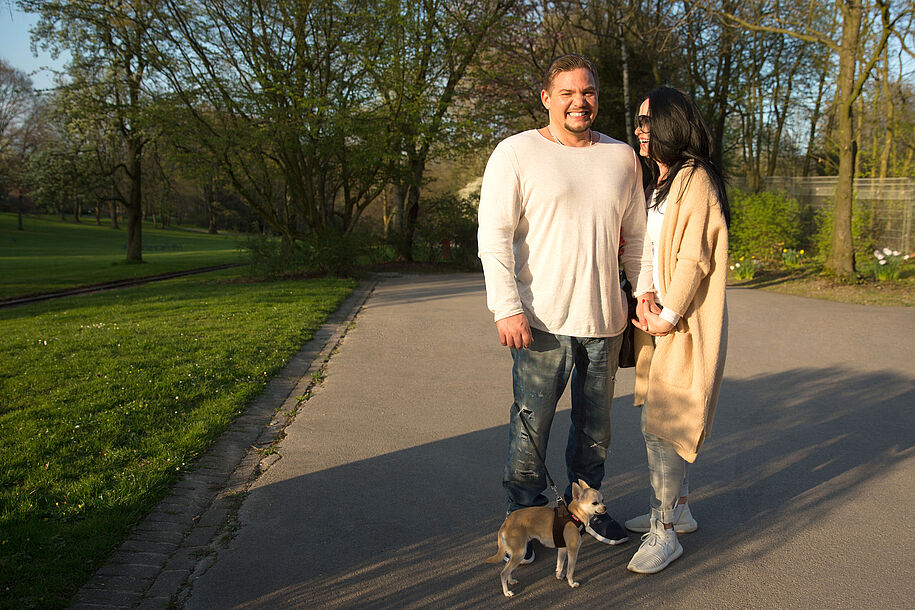
His girlfriend Rena says the orthoses stabilise Julian’s life. Everything would have been different with a wheelchair. They go together on a vacation, exercise, go out and live in a flat that is not barrier-free because that is the way they want it. Julian’s will to walk remains unbroken. If he will ever be able to reach the goal of a gait that is close to a physiological one is still written in the stars.
Developments in medicine, orthopaedics and biomechanics are always observed, especially by affected patients like Julian. The internet offers patients, their relatives as well as people from different specialist fields the opportunity to gather relevant information. This kind of information was not as easily accessible before the era of this medium. The communication and exchange among people as well as the visualisation via videos, graphics and photos are very different today than they were 30 years ago. Still, Julian Lichte would like to see a better and quicker education and more responsibility for the affected people to avoid leaving the possibility of an orthotic treatment to chance, as it was done in Julian’s case. Out of ignorance or conviction, physicians often do not give patients with spinal cord injuries, like Julian, any other option than the wheelchair. For many patients, a wheelchair is a good solution. However, in many cases, it is the only solution offered to them.
Julian Lichte has chosen a path with orthoses and without a wheelchair.
